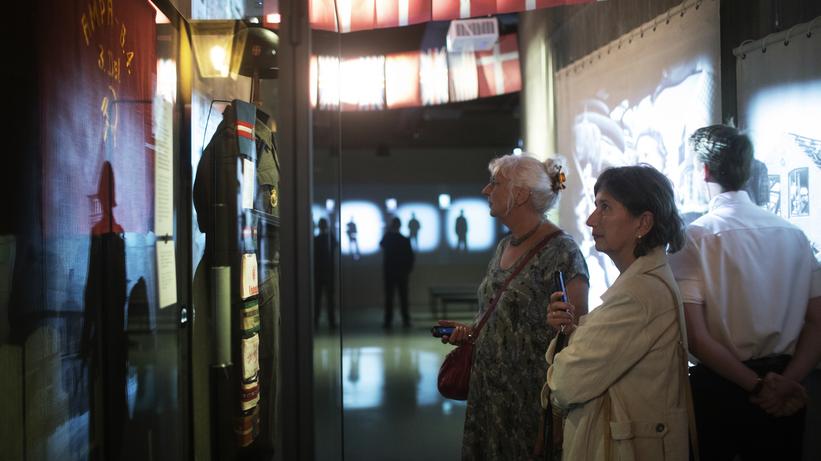
The museum in brief
The Museum of Danish Resistance is a museum dedicated to Denmark’s resistance struggle during the occupation of 1940–45.
After the museum was burnt down in an arson attack in 2013, the decision was taken to build a brand new and more contemporary museum at the same site in Churchhill Park by the Citadel (Kastellet).
Fortunately, all of the irreplaceable artefacts from the occupation period survived the fire. Today, they are either on display at the museum or safely stored away in the museum’s repository.
A large part of the new museum is subterranean, allowing visitors to quite literally take themselves underground on a journey back to occupied Denmark.
Focus on the difficult choices
The Museum of Danish Resistance places focus on the decision to resist – and to cross the threshold that resistance represented at the time.
Long into the resistance period, the vast majority of Danes believed that restraint and adaptation to the occupying forces was the only way for Denmark to avoid destruction and dictatorship.
Resistance activities were initially reserved to a very few.
Through various historical figures who lived during the occupation, the Museum of Danish Resistance presents some of the many difficult dilemmas and choices that Danes had to face when their country was occupied.
The decision to resist was not as black and white as the old pictures taken of the time.
The resistance struggle during World War II is a chapter of Danish history which hinges on the making of a difficult choice. The choice of violence and resistance. In contravention of law and order. Against the command of politicians and authorities and against the will of the majority.
It was a choice that could unfurl into devastating consequences and which put peoples’ very lives at stake.
Although the focus of the museum is on the Danish resistance struggle, the Museum of Danish Resistance also casts light on the political context of the period and the realities of everyday life under German occupation.
This is necessary in order to contextualise the resistance struggle so that it may be properly understood.
For resistance is not always black and white.
Founded by the resistance movement
The museum first opened on 15 October 1957 and was a gift from the resistance movement to the Danish state.
From the very beginning, the Museum of Danish Resistance has been owned by the National Museum of Denmark and that is still the case today.
The museum’s view as to how the Danish resistance fighters should be portrayed is something that has changed over time.
From being presented as a single unit of anonymous patriots, today there is much more focus on the idea that the struggle was not a single, unified movement.
Rather, it consisted of many different groups which spanned from the far left all across the political spectrum to the far right.